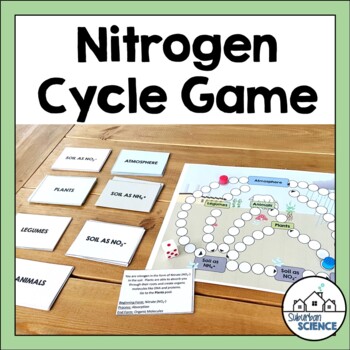Biogeochemical Cycles: Nitrogen Cycle Game- Nitrogen Cycle Activity
- Zip
What educators are saying
Description
Even secondary students need some games! This simple, full-color, interactive board game can be used as an introduction to biogeochemical cycles or a review after learning. Student worksheets during game play and conclusion questions ensure that your students will have a great understanding of the Nitrogen Cycle steps upon finishing this game. Not to mention how much fun they'll have!
➤Included in this bundle are the following items:
1. A game board (in multiple sizes for easy printing)
2. Set-up instructions for teacher
3. A student background page on biogeochemical cycles with vocabulary
4. Game play instructions for students
5. Set of 54 game cards
6. A game tracker page for student log of game play
7. Comprehension questions
8. Answer keys
The only materials not included are game pieces for each student and dice.
➤Digital Update: Google Slides versions of the student pages are included for students to type on. A digital game board is also included with movable game pieces. Dice and game cards will still need to be used in a traditional format in order for the game to proceed.
➤Looking for more biogeochemical cycle activities? You might be interested in my Carbon Cycle Stations which are included in my Full Biology Curriculum.
➤My Environmental Science Series includes lessons for each sphere of the earth:
Intro to Environmental Science Unit
Land Use & Sustainability Unit
________________________________________________________________________
⭐For updates about sales and new products, please follow my store: My TpT Store
You can also
⭐Subscribe to my newsletter for freebies and teaching tips
⭐Follow me on Instagram
⭐Check out my Facebook page
⭐Follow me on Pinterest
I value your feedback. Please rate this product. If you have any issues or questions about this product, please feel free to ask a question in my store or write to me at support@suburbanscience.com.





